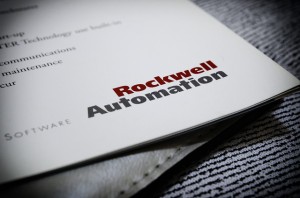Embracing rapidly evolving market changes via adoption of newer technology can help businesses and organisations differentiate their offering and distance themselves from their competitors.

Adopting such an approach can be costly in terms of time and resources, but it is certain to yield positive results in the long run, as illustrated by the hugely successful story of Rockwell Automation, the world’s largest company dedicated to industrial automation and information.
The company has been around for more than a century and has continually invested in order to make products available for sale as long as practically possible. One such product was the SLC™ controller family, which was first introduced in 1989 and soon become one of the most successful PLC platforms ever sold.
Rockwell soon realised that the time has come to develop a new platform with greater performance and integrated functionality, which is how the company’s CompactLogix™ came to be.
“To reduce the risk of maintaining a legacy system, we have developed safe and flexible migration strategies to help customers save valuable production time when migrating to a new control platform,” said Gavin Black, Product Manager: CompactLogix, SLC, Kinetix Motion at Rockwell Automation.
“CompactLogix™ provides increased flexibility with a new open architecture. It provides manufacturers and OEMs with a small controller that offers the perfect balance of cost competitiveness and performance. It delivers one programming environment for discrete, motion, process, drive, batch and safety control.”
Whether the migration is conducted all at once or in phases, Rockwell Automation has developed migration solutions to help to ensure a smooth transition from SLC-based control to Logix-based control and Integrated Architecture while minimising risk and reducing labour time.
“We have developed our Integrated Architecture Builder tool to improve migration and planning, together with code conversion tools to reduce the time to rewrite the controller program. This approach lowers conversion time and labour costs, reduces risk by preserving existing wiring connections, lowers engineering costs and minimises production downtime,” Mr Black said.
According to him, migrating from SLC to CompactLogix not only delivers operational benefits associated with migration to newer technology, but significant financial benefits as well.
“When customers were asked what the payback period was for their investment in migrating from SLC to CompactLogix, two-thirds responded that the return on their investment was achieved within eight months or less,” Mr Black said.
If you are considering a control system migration and would like to find out more about how Rockwell Automation can help you reduce the risk of maintaining legacy equipment and maximise your competitive advantage, please download the new whitepaper: “Are You Ready to Migrate Your Control Platform?“




















